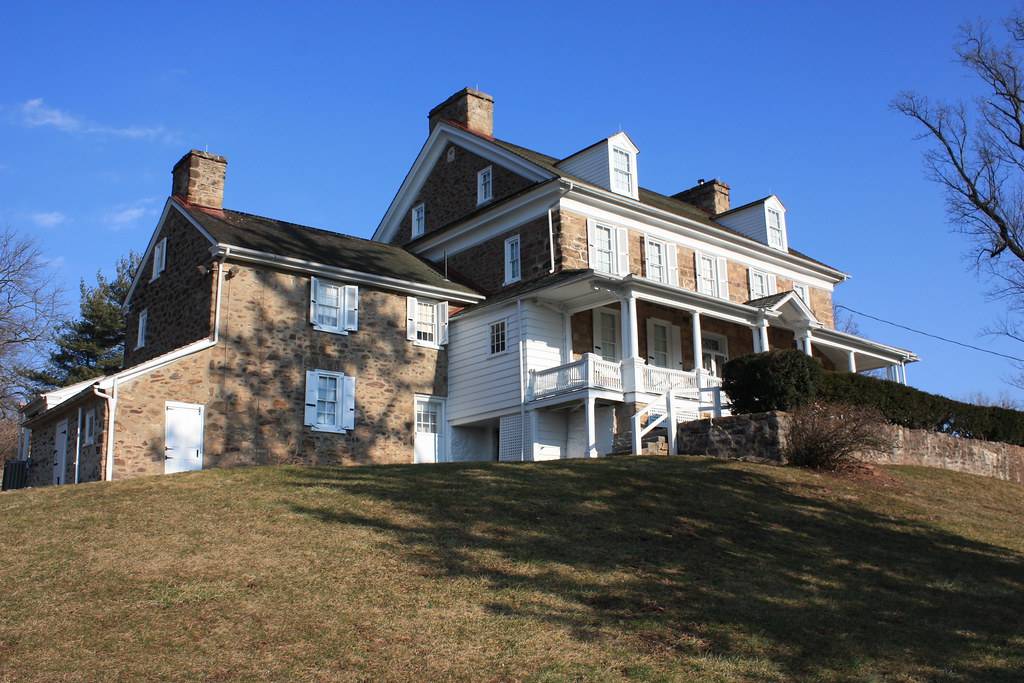I kicked-up a lot of material as I researched Audubon, Iowa in the recent For the Birds. Originally I’d hope to feature several Audubon towns in the United States — and I do believe they are found only in the United States — and was completely overwhelmed by wonderful delights in rural Iowa.
Today I present the rest of the story, or at least a trio of standouts amongst the 213 different Audubon features listed in the Geographic Names Information System. Actually, a case could be made that I’ve featured three-and-a-half. One spawned another in a specific instance.
Audubon, Pennsylvania

I began with Audubon, Pennsylvania since that particular spot had a genuine, tangible connection to John James Audubon through a property called Mill Grove. He moved there in 1803 when he was 18 years old. Only weeks earlier he went by Jean-Jacques Fougère Audubon — He adopted his anglicized name as he boarded a ship to immigrate to the United States. The young Jean-Jacques started with a bit of stigma during his earliest years although he flourished once he arrived at Mill Grove, as the National Audubon Society explained,
“Audubon was born in Saint Domingue (now Haiti), the illegitimate son of a French sea captain and plantation owner and his French mistress… he was sent to America, in part to escape conscription into the Emperor Napoleon’s army. He lived on the family-owned estate at Mill Grove, near Philadelphia, where he hunted, studied and drew birds, and met his wife, Lucy Bakewell. While there, he conducted the first known bird-banding experiment in North America, tying strings around the legs of Eastern Phoebes; he learned that the birds returned to the very same nesting sites each year.”
The National Audubon Society now manages the John James Audubon Center at Mill Grove and operates a museum on the historic site.
The adjacent town of Audubon served as a fitting tribute, with streets labeled for birds that starred in Audubon’s artworks: Lark; Owl; Sparrow; Thrush; Cardinal; Wren and so on.
Audubon Park, New Jersey
Audubon Park also had historical significance albeit of a much more recent vintage, and completely unrelated to John James Audubon. The United States government constructed Audubon Park to house workers employed at the nearby New York Shipbuilding Corporation’s shipyard in Camden during the Second World War. The United States needed ships and workers needed a place to live. Audubon Park offered a solution.
Audubon Park was a part Audubon Borough until the borough held a referendum in 1947 and booted Audubon Park out of Audubon. As New Jersey’s Courier-Post explained,
“Secession from Audubon was Audubon’s idea, with the cost of educating Audubon Park’s children a point of contention. Politics, though, was really at the heart of the move… Audubon Village was Democratic while Audubon leaned Republican. Audubon outnumbered its neighbor at the polls and the referendum passed.”
Apparently the thought of commingling with blue-collar shipyard workers was too much for original residents to bear. Audubon Park got the hook and became its own borough.
Like the Audubon in Pennsylvania, Audubon Park in New Jersey featured numerous streets named for birds. I counted about twenty five different species.
Audubon, Minnesota
Similarly, the Audubon located in Minnesota hid an interesting origin, assuming its true. Audubon was one of the many towns that emerged along railroad tracks in the latter half of the 19th Century America. An old book, A Pioneer History of Becker County Minnesota (1907), described How Audubon Received its Name when railroad officials traveled through the region investigating potential routes.
“About the middle of August, 1871, Mr. Thomas H. Canfield came through on a tour of inspection, and with him was quite a party of aristocratic looking people, and they camped where the Audubon depot now stands. The prairies were then covered with flowers and lilies, and there were several ladies in the party who were filled with admiration at the beauty of the surrounding country, and I remember that one lady asked Mr. Canfield if a railroad station could ever be established there that it be called Audubon. Another man took out a memorandum book and noted down this request. I afterwards learned that the lady was a niece of John J. Audubon, the great American naturalist.”
I have my doubts about the accuracy of an anecdote recalled a quarter-century after the fact from something someone “learned” from someone else. Maybe John James Audubon had a niece who traveled through Minnesota in the 1870’s. I don’t know. I couldn’t find any such niece after a perfunctory Intertubes search for whatever that’s worth. It still made a great story though.

Leave a Reply